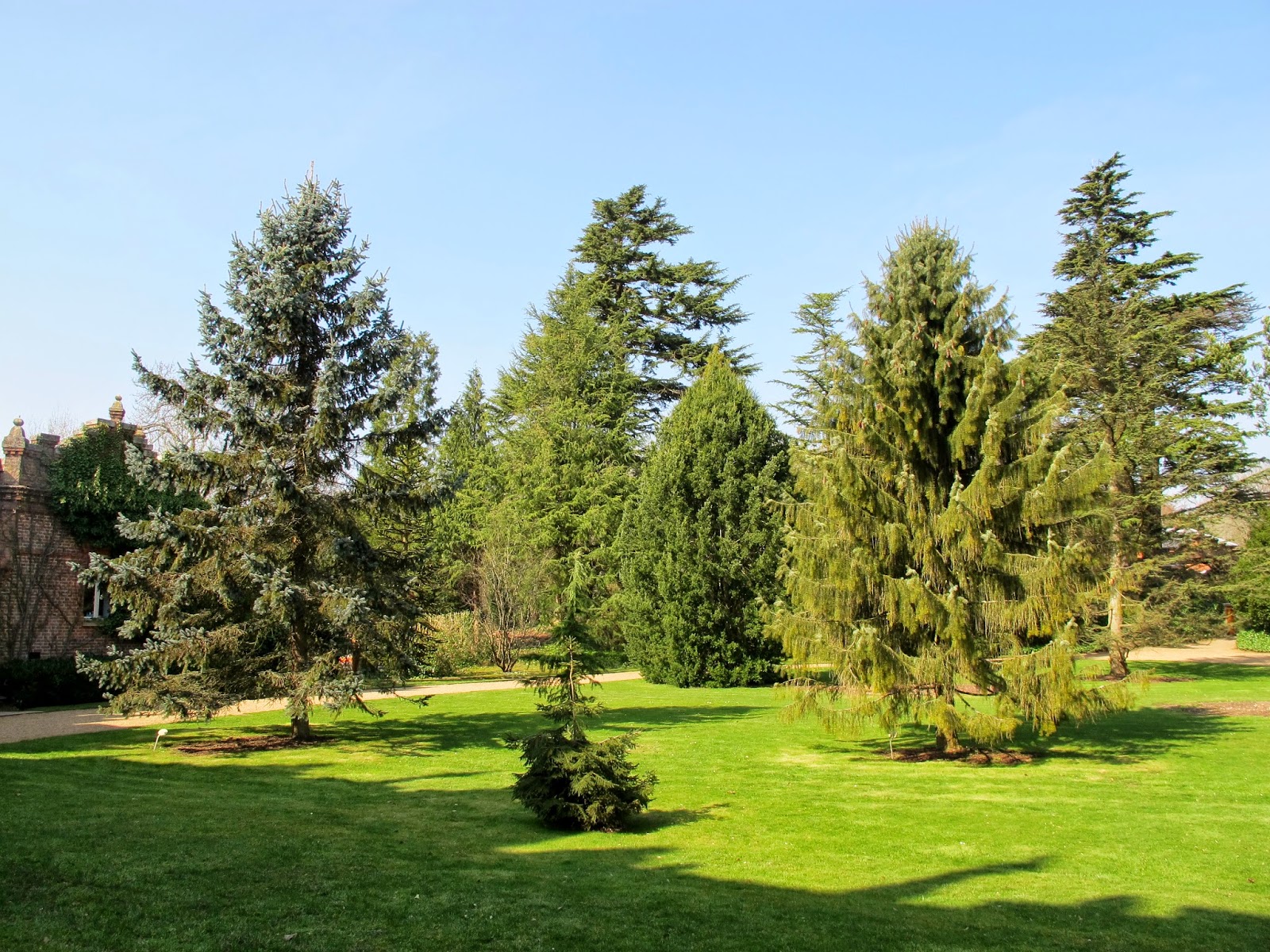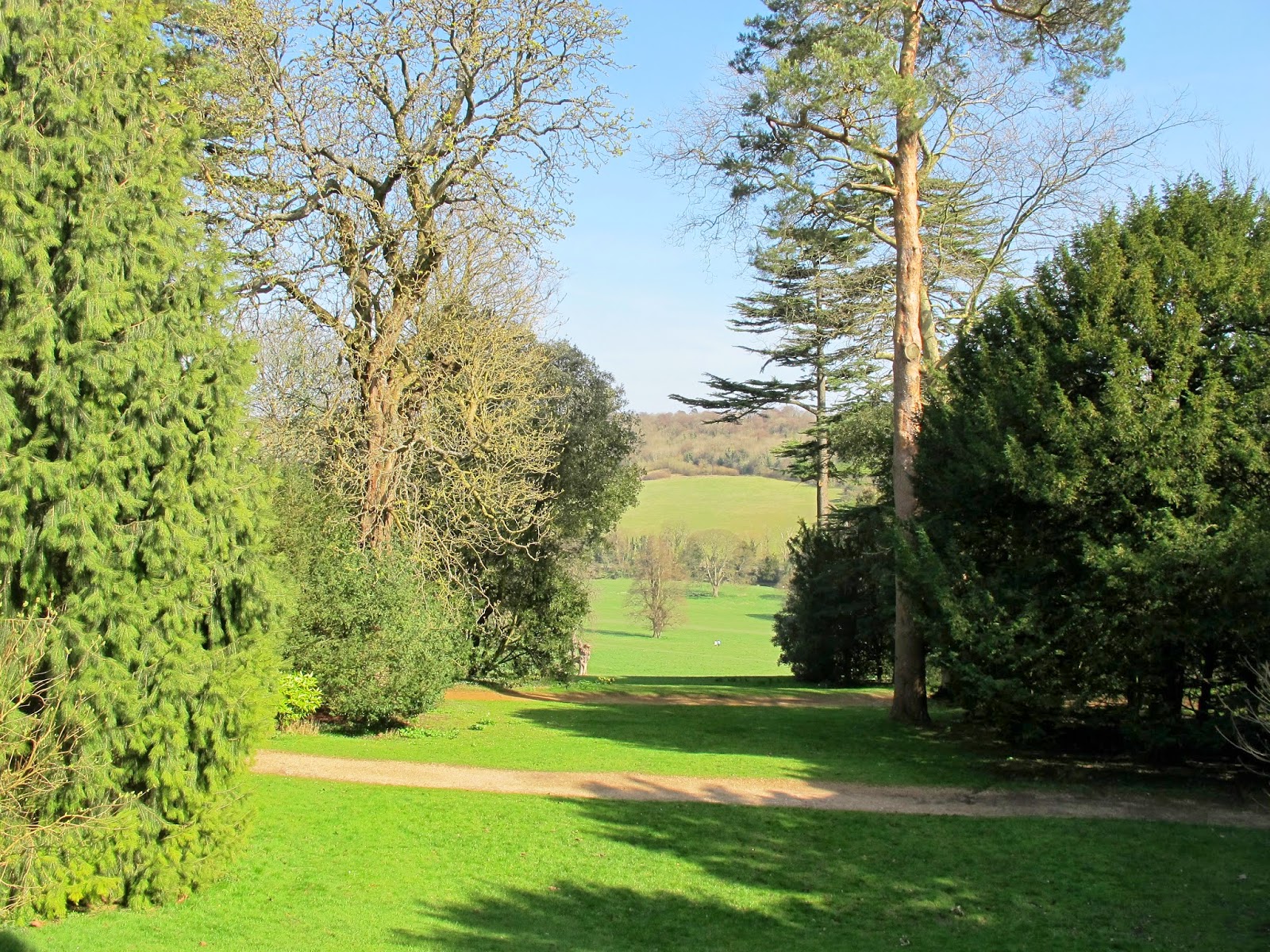Today I joined the National
Trust. Bodiam Castle
and Brownsea Island on my ‘UK
Bucket List’ are National Trust properties, and a quick look on their website shows that there are so
many more places that would also be great to visit – and we’ll only need to
visit 3 or 4 places to have saved money by becoming members!
With a few things to do today,
there wasn’t time to stray too far from home, but luckily there are over 30
National Trust sites within 25 miles of where we currently live.
I’d love to be doing more active
things, and I do have a BIG trip to get fit for, but with my current whiplash
injury (I know – there’s always something!) I’m forced to stick to more gentle
pursuits at the moment.
A quick look through the list of
possibilities nearby, and we decided upon Hughenden Manor, the former home of
Victorian Prime Minister Benjamin Disraeli, and a bit of a country retreat for him away from London. The house dates from the 18th
century, but was remodelled by the Disraelis in 1862. The house is fully open
to the public, and you can also visit the formal garden and grounds and walk in
the surrounding countryside.
It was beautifully sunny, so we
began outside – just in case the weather turned. Everywhere was covered with
spring flowers: celandines, primroses, lots of daffodils; a real yellow theme going on!
 |
| Celandines |
 |
| Primroses |
 |
| Wonderful daffodils |
 |
| I do love daffodils - the Welsh in me again :) |
Even the butterflies were yellow!
 |
| Brimstone butterfly (bottom centre of the photo) |
The planting of the formal garden
changes, and on this occasion the beds were full of varieties of lavender, with
a few yellow pansies poking through.
The views were lovely, red kites
swooped through the sky, the trees dappled the glorious sunshine with shade,
and all of the yellow flowers looked so vibrant and beautiful.
After enjoying the outside, we
moved on to the house itself. We just happened to arrive in time for a brief
talk about Benjamin Disraeli's life, so we decided to stop for that. I’m really glad
we did, as it was actually really interesting. I had known that Disraeli was a
Victorian Prime Minister, but had not realised he was her favourite (apparently he “made
politics interesting”).
 |
| Statue of Disraeli |
I also hadn’t realised that he
had done so much for ordinary people: championing votes for common people (you
previously had to have a certain wealth to be able to vote), and bringing in
various laws about safety conditions for workers, for health, for food
standards for ordinary people, for ensuring that new housing had sewerage
provisions…
As well as pioneering so much
change in Britain, he made his mark in international politics too with his involvement
in Egypt and the Suez Canal. For protecting British interests against the then
Russian Empire at the Congress of Berlin he was acclaimed as one of
Europe's leading statesmen, and he was offered a Dukedom; however he turned
this down and instead accepted the Garter.
He wasn’t always a
politician though. He was also a novelist with 17 published titles, plus a
writer of non-fiction. In his youth he was a ‘dandy’, and there are accounts of
him being fantastically dressed – even one account of him going about dressed
as a pirate with a dagger in his sock, quite a big deal in stuffy Victorian
England! He was also famous for having lots of mistresses, and when he married
it was widely known to be a marriage of convenience to a woman 12 years his
senior. His wife came with an income that he dearly needed, but they did fall
genuinely in love with each other – Disraeli even turned down the offer of a
State Funeral so that he could honour his promise to his wife and be buried
next to her.
Dizzy married me for money, but if he had the chance again he would marry me for love ” ~ Mary Anne Disraeli
 |
| Disraeli's grave, next to his wife. Also next to a benefactor who promised him a great deal of money if she could be buried next to him! |
 |
| The church down the hill from the house, where Disraeli is buried. |
Well that’s some of the history,
and now on to the house:
The house is now owned by the National Trust. They have arranged it as closely as possible to the way it was when Disraeli himself was there, and there is lots of information available about the history and significance of the different rooms, and the items within.
Queen Victoria had become friends with Disraeli, and her influence around the place was highly visible as she had given a lot of gifts. It is actually thanks to Queen Victoria that the interior of the house could be so faithfully reconstructed: she visited the house after Disraeli's death, and took with her a photographer who captured each room, the photos forming part of the Royal Collection and being used as reference later by the National Trust:
 |
| A statuette of Queen Victoria with a spinning wheel. I never knew she was yarny! |
 |
| Portraits of Victoria and Albert |
 |
| The various pictures gifted by Victoria all had a cute little crown at the top of the frame. |
 |
| This fantastic edition of 'Faust' was also a gift from Victoria |
The rooms were all presented beautifully, with lots of information about the history. For example, Queen Victoria had visited Hughenden for dinner with the Disraelis. In the dining room is of course a table and chairs. Queen Victoria's actual chair can be distinguished: Victoria was very short, but liked to sit with her feet comfortably on the floor. Therefore, for her visit, the bottoms of the chair-legs were sawn off to make her comfortable!
 |
| The dining room |
 |
| Can you spot her chair? :) |
How fantastic is this library? Disraeli's library contains non-fiction works, mainly about politics, history and theology. He said that if he wanted to read a novel he would write one!
Disraeli's study is the room that they have been able to recreate most authentically, this is the room where he did most of his writing:
Personally I love the drawing room, with its views over the garden and the wonderful sunlight flooding in - this had previously been the library, but the two rooms were swapped over by Disraeli's nephew to protect the books from sun damage, and this is how they remain.
 |
| Do you see the sewing box on the table? |
 |
| Here it is in more detail |
I also love the carved detail on this chair-back:
Great weather, beautiful surroundings, and a classic bit of our British history. A lovely way to spend a day!










No comments:
Post a Comment